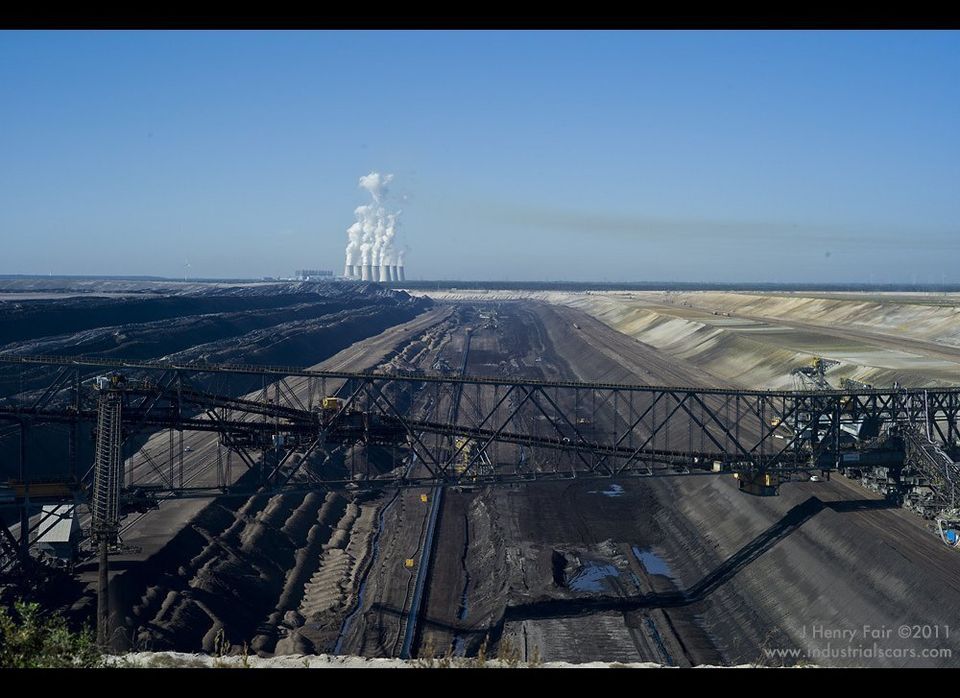It's autumn in the very east of Germany, just along the border with Poland. The train is a small regional, stopping in every town. They are generally picturesque, with small houses in the quaint German style, with a town center. The area seems not much changed since reunification.
This is a region where lignite (aka brown coal) is mined, and I have photographed it from the air, so I know that just beyond the nice houses and young trees are gaping gashes in the earth from which this execrable power source is extracted. The mist over the fields is so ethereal, and I so tired, everything seems dreamlike. The train stations get a little more decrepit as we go along, the towns with names like Wellmutz, Guben, and Coschen. Time seems to have stayed on the train here and not booted this region into the twenty-first century. But I must disembark to meet a press person from the conglomerate that mines the coal and burns it to produce electricity. Just as the region seems stuck in a bygone time, so do we, with our acquiescent complicity in the use of this dinosaur muck to power our televisions while the storms batter our doors and windows. But we can't bother to look away from the glowing eye that comforts, entertains, and urges conformity.
She (the press person) is very nice and proceeds to guide me on a tour of the power plant - I, who am so easily hypnotized by the magic of engineering, even that which is killing us. I scurry around and try to create two dimensional graphics that convey the wondrous monstrosity surrounding me, but of course success eludes. My docent tells me things that I know are not true, but I don't challenge her, too much work to be done, and I know it's futile. I know she is conveying to me what she believes, what she has been told. Because she is smart enough to know that living next to a point source emitter of 348 kilos of evaporated mercury is a bad idea. But I have looked at the environmental agency reports on the plant, so I know the numbers. And when she tells me that they bury the ash in the exhausted mine area, but not to worry, it's just sand, I don't bother to ask about all of the arsenic.
Photographers can't escape their medium-inherent roles as witness. Even a Rayogram, that most disconnected of the photographic observations is a testament to a time and place. The perceived dichotomy between a photograph as reportage or art is a false one. All photographs are reportage. Someone made a conscious decision to capture a precise scene of their choosing on photosensitive medium and reproduce it for others to see. Some of these arbitrary crops of time and place have more meaning than others. The ones that transcend the sum of their parts and convey something more to the viewer can be called art, or possibly pretense.There is a degree to which the subject is irrelevant in every photograph. All that matters is the graphic image presented to the viewer for interpretation. Possibly, separation from the subject is preferable, as that makes the photograph more of an object of its own. How distant seem the days when digital reproduction, or image manipulation were taboo. Increasingly, in the photography world, only the two dimensional object on the wall has importance, relation to the subject is only distracting. Just as we, the viewers, are disconnected from the impacts of our indulgences on distant people and places, perhaps we don't want too much meaning in our art... just enough to match the couch, thank you.
To see more great photography visit HuffPost Exposure.
